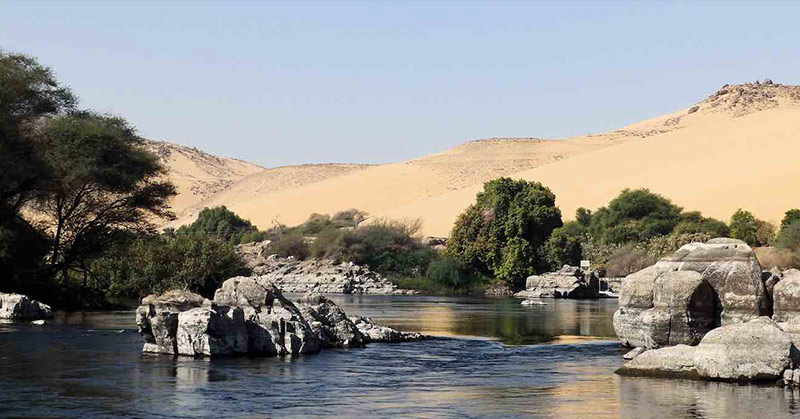This article was originally published on January 7, 2020, and has since been updated.
A significant portion of the land in northern Africa is suffering from desertification, a destructive process where fertile land transforms into desert due to factors like drought, improper farming methods, and deforestation. The lack of clean water exacerbates this issue, leading to a vast expanse of arid wasteland.
Following Libya, Egypt stands out as the country with the highest desert coverage in Africa, with 90% of its land consisting of deserts, 68% of which is sandy terrain.
In response to this environmental challenge, Egyptian scientists have developed an ingenious solution for afforestation utilizing treated sewage water. The Serapium Forest in Al Ismailia, located 10 miles west of the Suez Canal, is a prime example of this innovation. This 500-mile forest, adorned with towering eucalyptus trees, thrives on nutrients from sewage effluent and the intense Egyptian sun.
The process
The forest was established by Egypt’s National Program for the Safe Use of Treated Sewage Water for Afforestation, an organization dedicated to utilizing sewage water for reforestation efforts.
The sewage water, loaded with nitrogen and phosphorus, is collected from storage tanks and undergoes a purification process to remove impurities. It is then oxygenated for further purification and sterilization.
Once treated, the sewage water becomes a nutrient-rich solution, acting as a potent fertilizer for the forest. The trees are irrigated with this water, benefiting from the ideal combination of nutrients, sunlight, and water for rapid growth.
The forest’s success is further enhanced by Egypt’s intense sunlight, which boosts photosynthesis rates and sustains plant growth even in the scorching heat.
Benefits
The creation of forests like the Serapium not only aids in combatting desertification but also contributes to reducing pollution in the Nile River, Egypt’s vital water source. By repurposing wastewater for afforestation, Egypt can significantly improve water quality and mitigate environmental degradation.
Furthermore, afforestation projects help in soil stabilization, erosion prevention, temperature regulation, and biodiversity conservation. These trees also play a crucial role in carbon sequestration, offsetting greenhouse gas emissions and promoting a healthier environment.
Future plans for the forest include the cultivation of high-quality wood varieties like teak and mahogany, in collaboration with organizations like Forest Finance and the Technical University of Munich.
Sources
- Andy Corbley. Scientists Use Recycled Sewage Water to Grow 500-Acre Forest in the Middle of Egyptian Desert. Good News Network. https://www.goodnewsnetwork.org/using-sewage-water-to-grow-trees-in-egyptian-desert/. Retrieved 04-01-2020
- Klaus Sieg. Greening the Desert With Wastewater. Reasons to be Cheerful. https://reasonstobecheerful.world/greening-the-desert-with-wastewater/#. Retrieved 04-01-2020
- Hassan Abdel Zaher. The Nile, a vital source of water, turns into a source of disease. The Arab Weekly. https://thearabweekly.com/nile-vital-source-water-turns-source-disease. Retrieved 04-01-2020
- Admin. What is Desertification? Conserve Energy Future. https://www.conserve-energy-future.com/causes-effects-solutions-of-desertification.php. Retrieved 04-01-2020






